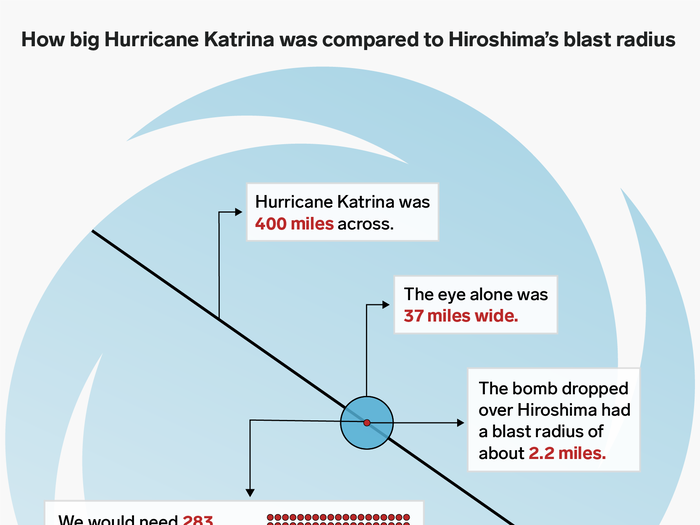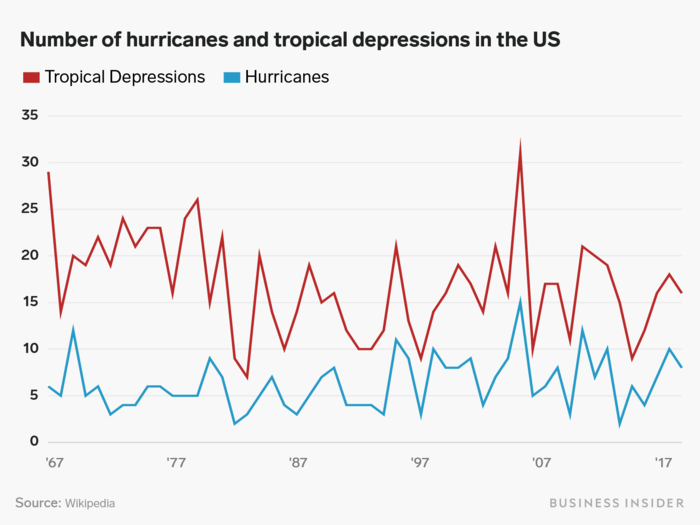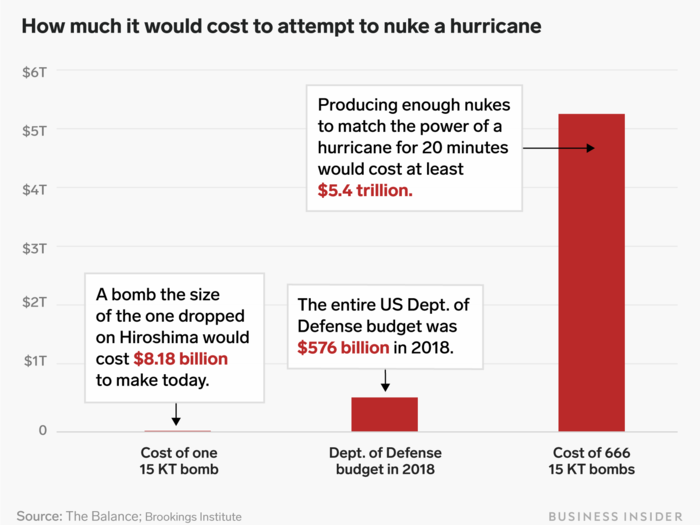- Home
- slideshows
- miscellaneous
- President Trump suggested using bombs to fight hurricanes. These 4 graphics show why that would never work.
President Trump suggested using bombs to fight hurricanes. These 4 graphics show why that would never work.
To understand why bombing a hurricane wouldn't work, it's important to understand how a hurricane forms. These storms are vast low-pressure cyclones with wind speeds over 74 mph. They form over warm water in the mid-Atlantic Ocean.

The problem is that hurricanes emit a mind-boggling amount of energy. So we don't have nukes big enough or powerful enough to continuously match a hurricane's strength.

A hurricane can release the same amount of energy as the explosion of a 10-megaton nuke every 20 minutes, the NOAA article says. That's more than 666 times bigger than "Little Boy," the bomb that the US dropped on Hiroshima, Japan, in 1945.
In order to match the energetic power of a hurricane, there would need to be almost 2,000 "Little Boys" dropped per hour.
In terms of size alone, Hurricane Katrina — with a width of 400 miles — was 283 times the size of the "Little Boy" bomb blast radius. Katrina's eye alone, at 37 miles in diameter, was 11 times the size of the area covered by the 15 kilo-ton explosive detonated over Hiroshima.
What's more, the NOAA article says, once an explosive's initial high-pressure shock moves outward, the surrounding air pressure in the hurricane would return to the same low-pressure state it was in before. And the shock wave that a nuke produces travels faster than the speed of sound.
So unless we were able to detonate nuclear explosives in the eye of the hurricane on a continuous basis, we wouldn't be able to dissipate the low-pressure air that keeps the storm going.
The idea to attack tropical storms before they become full-fledged hurricanes "isn't promising either," the NOAA article says.

An average hurricane season has 12 named storms, six hurricanes, and three major hurricanes. These weather events all begin as tropical depressions, in which low-pressure areas are accompanied by thunderstorms and circular winds under 39 mph.
Very few of these depressions develop into hurricanes, and "there is no way to tell in advance which ones will develop," the NOAA article says.
Even if we could predict which tropical storms develop into hurricanes, it would be extraordinarily expensive to create enough nuclear bombs to fight them.

According to the Brookings Institution, the cost of the bomb dropped on Hiroshima would be $8.18 billion in 2019 US dollars, adjusted for inflation.
In 2018, the base budget for the US Department of Defense was $576 billion.
We would need 666 "Little Boy"-sized bombs to match the power that a hurricane emits every 20 minutes, yet building just 71 of them would cost more than the entire annual US defense budget.
Popular Right Now
Advertisement